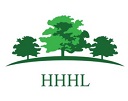



By the 1780s, agricultural experts were advocating arable farming in place of rabbit farming. By 1813, Arthur Young in his 'General View of the Agriculture of Suffolk' was able to write Within the last twenty years, great tracts of them (the warrens) have been ploughed up and converted to the much better use of yielding corn, mutton and wool.
He specifically mentions the estate of Downham - the whole some years ago was warren but now a large quantity is under the plough.
Newspaper Archives have notices requesting tenants for High Lodge and these notices show the changes in farming the land.
In 1778, High Lodge was described as 'farm, chiefly warren, well-stocked with rabbits'.
In 1809, there is a farmstead which consists of a 'comfortable dwelling house, garden, barn and granary; hitherto used as a warren'.
The change to arable apparently took some time, because in 1819 the 'warren land to be converted to arable'.
Nine years later, in 1828, it was described as a 'desirable arable and flock farm' with buildings 'nearly new and on a most extensive and commodious plan' while the farmhouse had been thoroughly repaired and awaited 'the residence of a very respectable family'.
In 1830, there was arable, meadow and pasture for eight hundred sheep.
Hemp lands were established to comply with the Statues of 1553 (Henry VIII) and the re-issue of 1563 (Elizabeth I) which said that for every 60 acres under the plough, one quarter of an acre of flax and hemp must be sown. Once arable farming took over from warrening, hemp had to be grown to comply with the law.
Hemp has been grown and used in the UK for thousands of years and was once one of the most valuable commodities in the country, if not the world. Some sources suggest hemp was brought to Britain from Asia at around 800 BC. Roman and Anglo-Saxon hemp findings in this country date back to 140 - 400 AD.
Demand for hemp from the Royal Navy and trading companies and for everyday items such as sacks and rope meant that hemp was grown in every single county in England, Ireland, Scotland and Wales. Many place-names come from 'hemp' such as 'Hempton' and even 'Hampshire'.
In his book 'A Marginal Economy; A Marginal Economy: East Anglian Breckland in the Later Middle Ages'. (Cambridge University Press. 1989) Mark Bailey notes that Most cultivation was on a modest scale and in the main for domestic use. It was used to make linen cloth, nets for rabbiting and fishing, and rope … As the King's ferreters were accustomed to making their own nets, it seems likely that many warreners and trappers did the same for themselves from locally grown hemp, and presumably made a few extra for sale to the wider market
.
The Tithe Map of 1865 lists the land use: arable; pasture; feeding grounds; sheepwalks; trees and plantations; broom and furze cover (for game) and 'waste'.
Farming at High Lodge continued until the First World War and by 1918, the land was described as 'derelict' and the farm 'untenanted'.